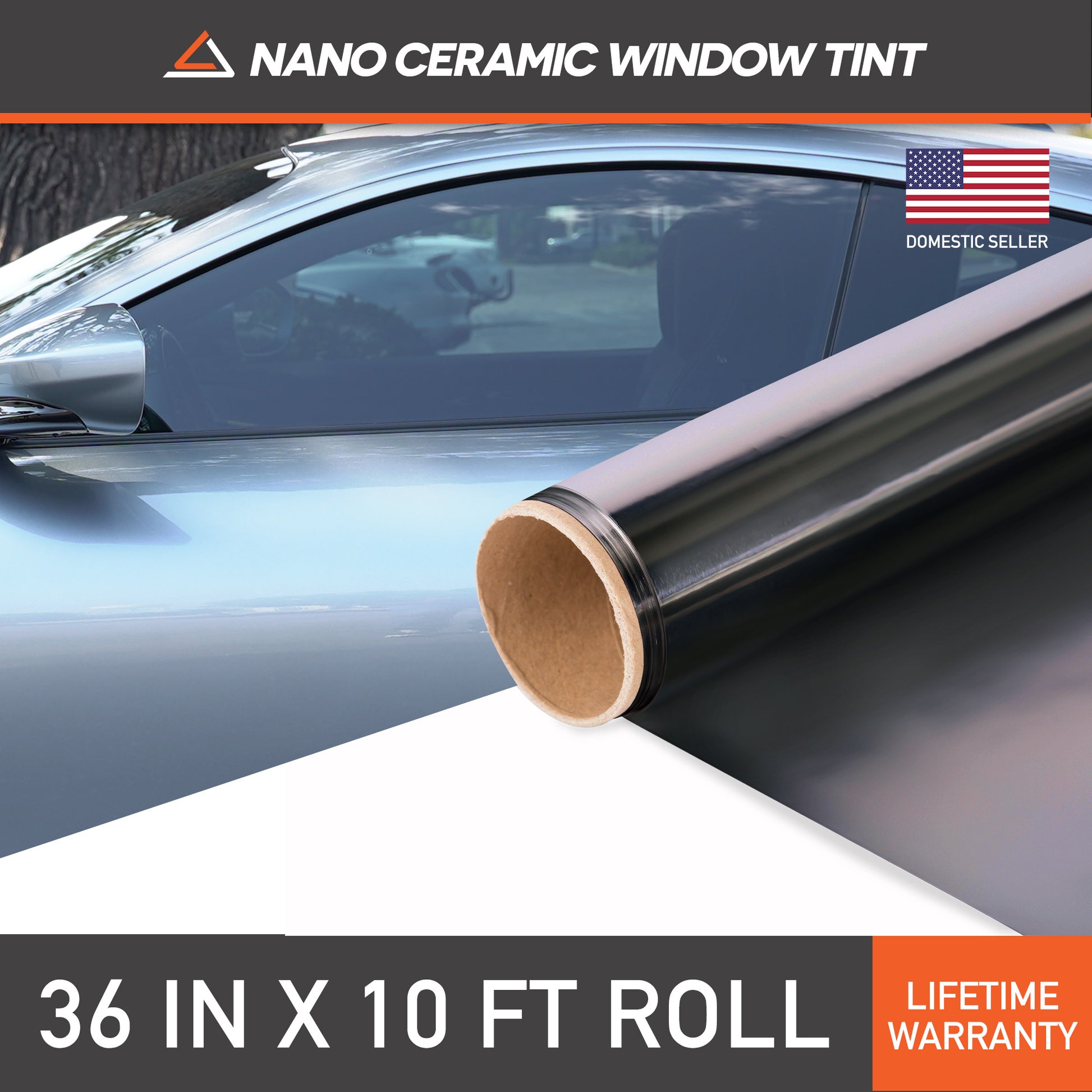AO Detail Window Tinting for Exceptional Film Application Quality
AO Detail Window Tinting for Exceptional Film Application Quality
Blog Article
Stay Cool and Comfortable: The Scientific Research Behind Window Tinting
Window tinting represents a sophisticated interaction of products scientific research and useful application, working mainly with a slim film that modifies the means light engages with glass. This modern technology is not merely an aesthetic choice; it plays an important role in lowering solar warmth gain, reducing glare, and supplying substantial UV security. As we check out the different systems and benefits connected with Window tinting, it ends up being evident that its effect prolongs beyond comfort, affecting power consumption and ecological sustainability. The inquiry stays: what elements should one consider when choosing the perfect Window color for their particular demands?

Just How Window Tinting Works
Window tinting runs through the application of a thin film to the glass surface, which serves to customize the method light connects with the Window. This movie is usually composed of polyester or various other synthetic materials and is embedded with numerous dyes and metals that influence light transmission and reflection. When light strikes the tinted Window, a part of it is absorbed, while some is shown, and the remainder goes through.

In addition, Window tinting can boost personal privacy and reduce glare, making areas more comfy without jeopardizing visibility. The effectiveness of Window tinting differs based upon variables such as the kind of movie made use of, the angle of light incidence, and the attributes of the glass. Comprehending these concepts is important for picking the appropriate tint for specific requirements and atmospheres.
Benefits of UV Security
Among the most substantial benefits of Window tinting is its capability to provide effective UV defense. Ultraviolet (UV) radiation from the sunlight is a well-documented reason of skin damage, including early aging and a boosted danger of skin cancer cells (AO Detail Window Tinting). By incorporating Window tinting, individuals can considerably reduce their exposure to damaging UV rays, boosting their total health and health
Top notch Window film can block up to 99% of UV radiation, creating a safer environment for residents. Window tinting helps reduce these effects, protecting the visual charm and stability of interior areas.
Additionally, many Window film provide a dual advantage by decreasing glow, which can enhance comfort and performance. In general, the implementation of Window tinting serves as a positive action to guard health and prolong the life of valued belongings, making it a sensible investment for both household and business setups.
Temperature Level Regulation Devices
Reliable temperature policy is a vital advantage of Window tinting, as it contributes to a more comfortable interior atmosphere. Window film are designed to reflect, soak up, and send varying degrees of solar power, enabling a controlled administration of heat entering an area. This regulation is primarily accomplished through the optical residential properties of the color, which can block a substantial portion of infrared radiation while permitting noticeable light to pass through.
By decreasing warm gain during warmer months, Window tinting helps keep a stable indoor temperature, decreasing the dependence on air conditioning systems. On the other hand, during cooler months, specific sorts of Window film can assist preserve heat within the structure. This dual performance makes certain that occupants experience constant convenience despite external weather.
In addition, Window tinting can mitigate temperature level changes brought useful source on by straight sunshine, lowering the danger of locations near home windows. Consequently, the general indoor climate becomes more balanced, boosting resident satisfaction and efficiency. The scientific research behind these temperature level policy systems highlights the significance of Window tinting as a sensible option for boosting living and functioning settings.
Enhancing Power Performance
Power efficiency is dramatically enhanced via the application of Window tinting, more structure upon the benefits of temperature level regulation. By lowering the amount of solar heat that goes into a building, Window tinting lessens the dependence on cooling systems, leading to lower energy usage. This not only contributes to minimized energy costs yet likewise reduces greenhouse gas exhausts connected with energy manufacturing.
Along with heat reduction, Window tinting also assists keep stable indoor temperature levels, which can lower the work on home heating systems throughout cooler months. This twin benefit of managing both warmth gain and loss cause a much more efficient total energy performance for commercial and residential residential or commercial properties alike.
Furthermore, Window tinting can protect home furnishings and interiors from unsafe UV rays, which can cause fading and degeneration in time. By maintaining the integrity of interior areas, homeowner can lower the regularity of repair services and replacements, additionally boosting price financial savings.
Inevitably, integrating Window tinting as part of an energy-efficient technique not only optimizes comfort however additionally promotes sustainability, making it a sensible financial investment for those looking to boost their energy footprint.
Picking the Right Tint
Choosing the proper click to read more Window color is vital for optimizing the advantages of this enhancement. The choice of color can dramatically influence energy efficiency, aesthetic appeals, and privacy. When taking into consideration Window tinting, it is vital to evaluate the various kinds of film offered, including colored, metalized, and ceramic options. Dyed film give a fundamental degree of warm reduction and privacy yet might discolor over time. Metalized film offer boosted warmth rejection and Full Report boosted resilience because of the reflective homes of metal layers. They might conflict with digital signals.
Ceramic Window film stand for a remarkable option, integrating outstanding thermal insulation with low reflectivity, therefore protecting a clear view. It is likewise important to consider the lawful regulations regarding color darkness in your area, as conformity is vital to make sure and avoid fines safety.
In addition, analyzing your certain demands-- such as UV defense, glare reduction, and privacy-- will certainly assist your selection procedure. Consulting with a professional installer can give beneficial insights and suggestions tailored to your scenario. Eventually, the right Window tint equilibriums capability and looks, adding to a comfy and energy-efficient atmosphere.
Final Thought

Window tinting stands for an advanced interplay of products scientific research and sensible application, functioning primarily through a slim movie that changes the method light connects with glass.Window tinting runs via the application of a thin film to the glass surface, which serves to change the means light engages with the Window. By incorporating Window tinting, people can significantly reduce their exposure to hazardous UV rays, enhancing their overall health and wellness.
Furthermore, Window tinting can reduce temperature variations caused by direct sunshine, reducing the threat of warm spots near home windows. When considering Window tinting, it is important to evaluate the various kinds of film readily available, including colored, metalized, and ceramic options.
Report this page